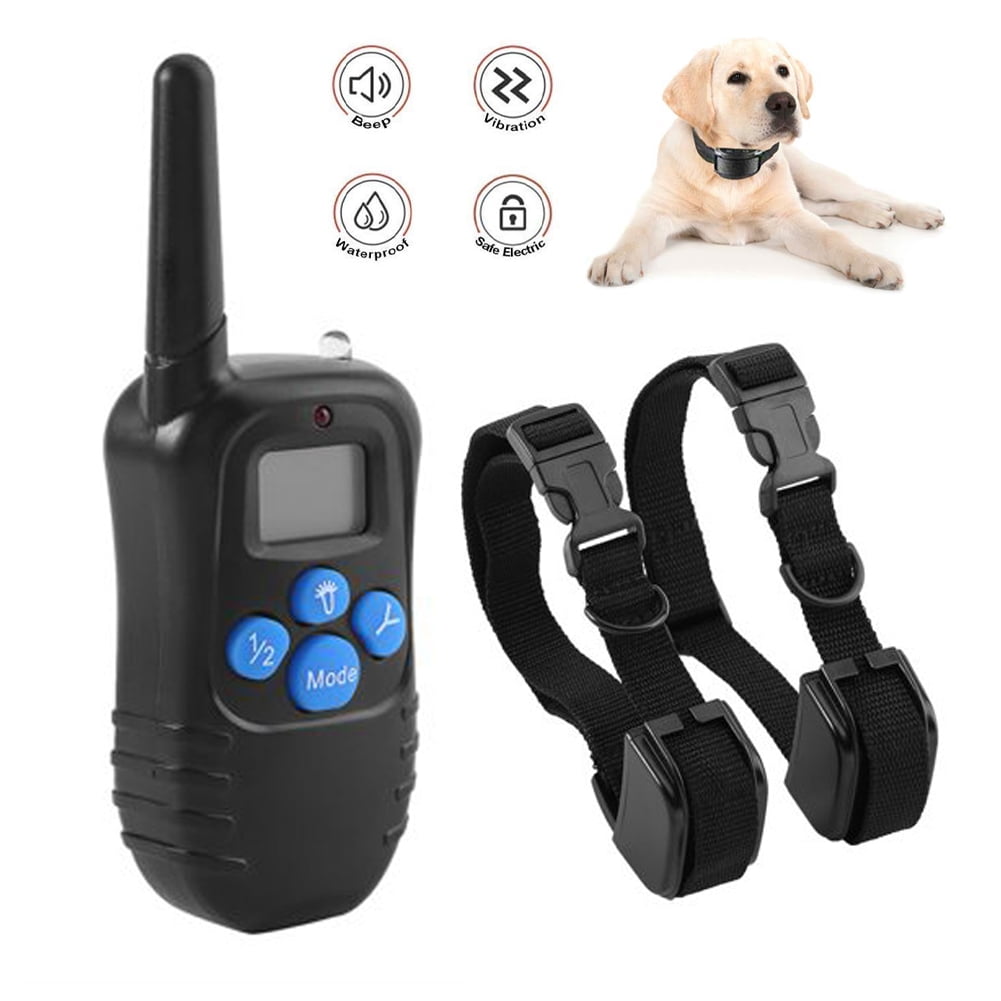
Currently, there are four major dog shock collar brands that have established themselves as reliable and accurate.
#DOG TRAINER COLLAR HOW TO#
The only way to use a safe training session with the use of a dog shock collar is to educate yourself on how to use them, and use only high-quality devices.

This way the pet won’t associate the training itself with the collar even though the discharges will be coming from the collar.

To make sure that your dog retains a positive view of the shock collar, put it on 20-30 minutes before the training and to take it off 20-30 minutes after the training. Don’t forget to reward the dog whenever he does something right, or for any significant period of time when he hasn’t done anything wrong. Because a shock collar is simply a tool, regular dog training principles still apply. It is vital for your verbal and shock warnings to be consistent both with each other and with the dog’s behavior. Combine the shock collar with verbal warnings. Instead, aim to use the shock collar when the dog has just done something wrong. It's important to use the shock collar only at the right moments – never use the shock collars after your dog has done something bad or it will view it as punishment. Once the dog is familiar with the shock collar, you can start training. Repeat this process several times until the dog views the shock collar as just another thing that goes on his neck when it is time for a training session. Let the dog sniff it and take a good look at it. The first step is to properly introduce the dog to the collar. There are several steps to consider when training your dog with a shock collar: Using a dog shock collar will likely only irritate and anger the animal, and you will only continue hurting the dog unnecessarily.
#DOG TRAINER COLLAR PROFESSIONAL#
If you are dealing with an aggressive or untrainable dog, you should consider contacting a professional dog trainer. It may feel surprising for some, but shock collars are actually not advisable for problematic and aggressive dogs. Know when the collar is useful, and when it's not. As soon as you have achieved your training goal, you should focus on continued training without the shock collar. The goal of training dogs using shock collars is to use this device as little as possible. What trainers say is that when the process is done correctly, the dog will learn quickly that the mild shocks from the training collar are nothing more than a form of communication – a sort of physical pat on the neck. No shock collars should be used indefinitely. Your aim here is to teach the dog that the shock discharges from the collar coincide with your verbal warnings and with certain of the dog’s behaviors. Shock collars are intended to work in conjunction with proper dog training methods. The Basics of Training with Shock CollarsĪ dog shock collar works by discharging mild impulses into the dog’s neck.After analyzing four major and most reliable dog shock collar brands on the market, here's what we found:ĭogtra vs SportDog vs Petsafe vs Educator INTERVIEW: Dog Trainer on Using Electronic Shock Collarsīelow is an extensive dog shock collar comparison and a guide on how to pick the best dog training collar for your pooch if you've decided that it's the only option left to try. And, pet owners must familiarize and educate themselves on how to use these electronic devices safely to avoid causing any harm to the dog. The bottom line with the use of dog shock collars is that only high-quality, precise, and accurate devices must be used. This is similar to prong collars which are not needed for the majority of canines but are the only option in isolated cases. Many professional dog trainers explain how in some cases and for specific dogs, a shock collar is an essential tool that can also be used safely and without any harm done to the dog. This is certainly true and a number of studies have demonstrated this.īut the case for using shock collars is not that black and white. Dog shock collars are viewed as a sort of harmful device that may cause the dog pain and aims to train them through negative reinforcement. It's one of the most controversial training tools in a dog owner’s arsenal.


 0 kommentar(er)
0 kommentar(er)
